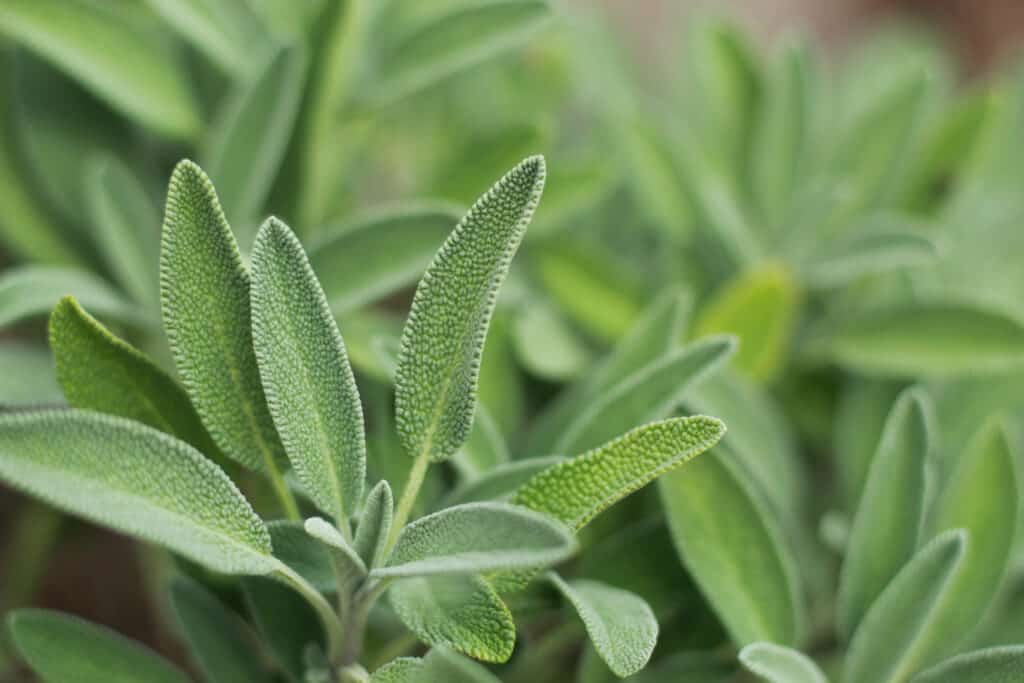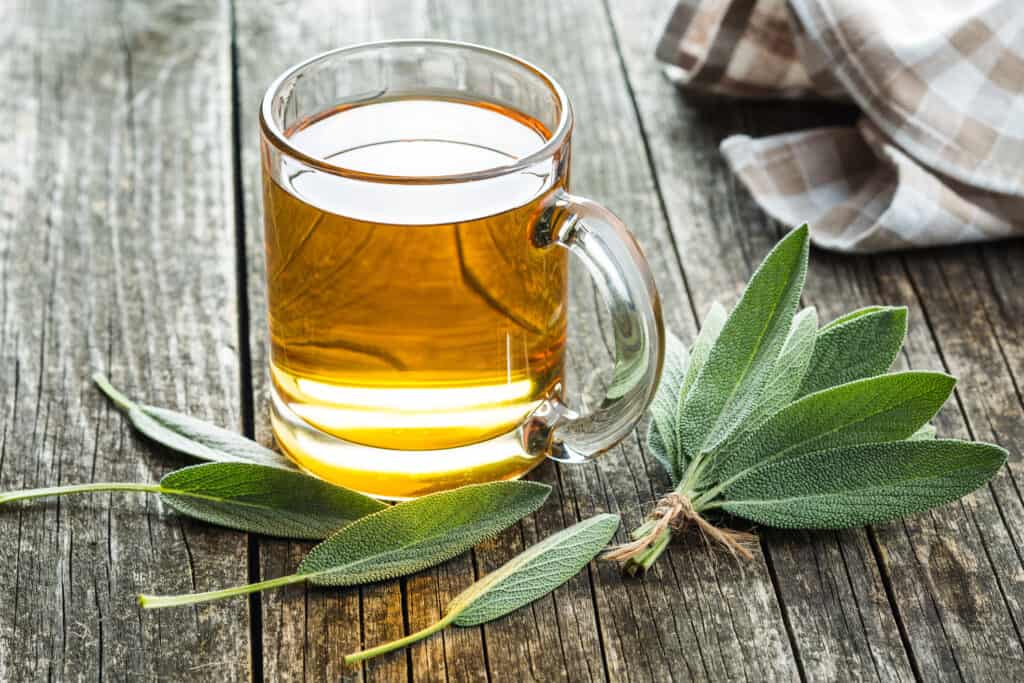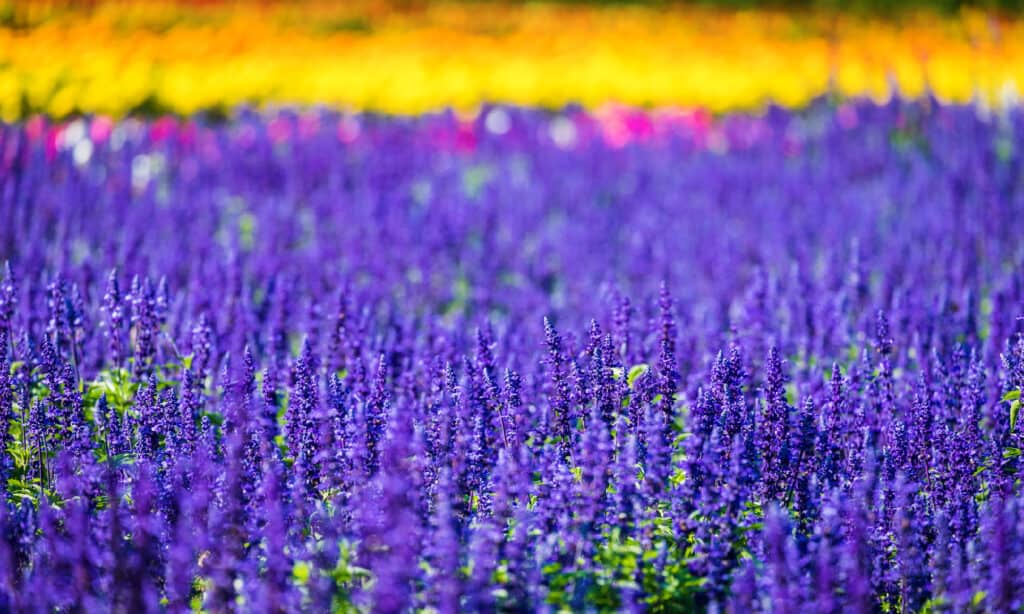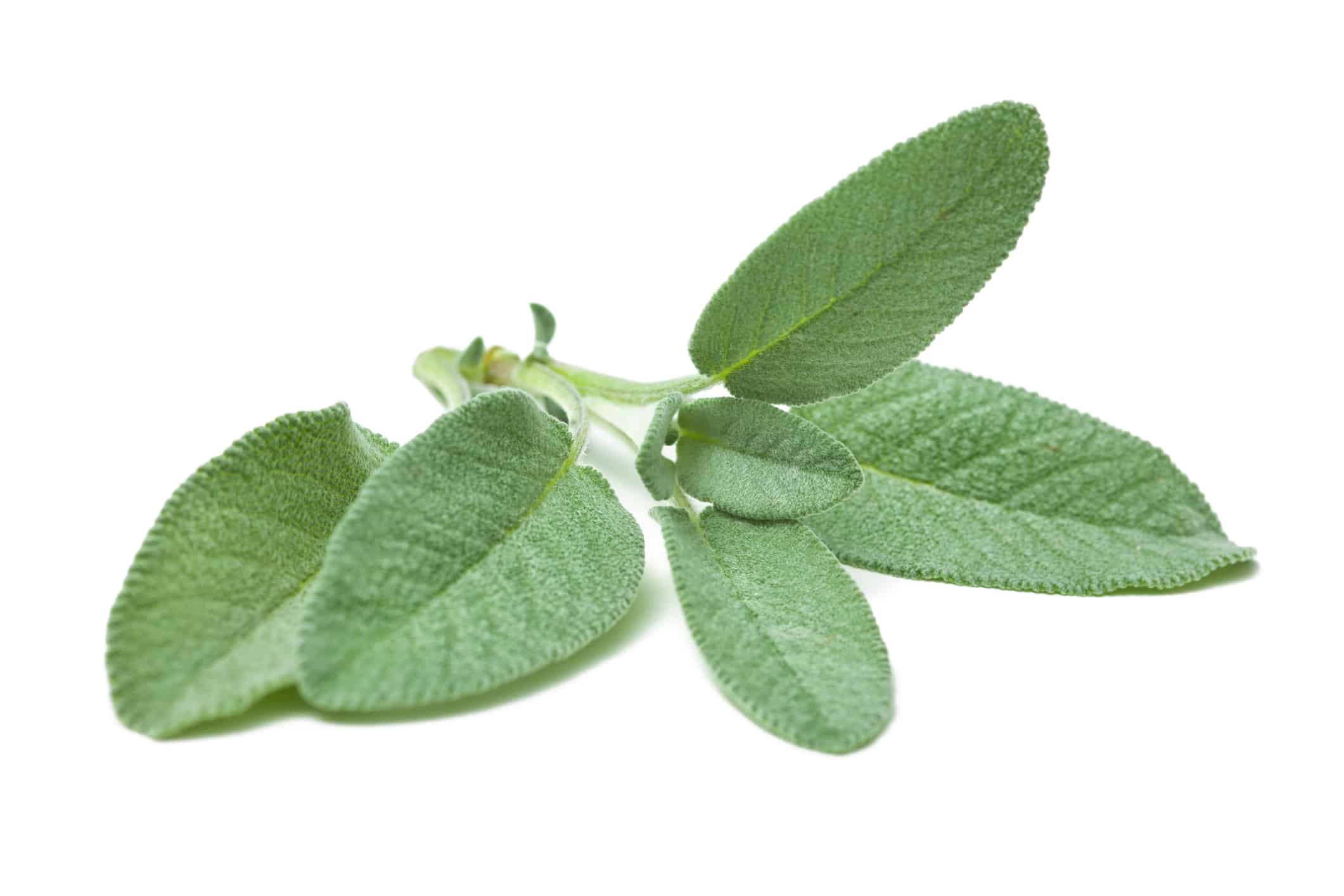Sage is a delicious and attractive herb. It’s used worldwide to flavor dishes (it goes especially well in Thanksgiving stuffing!) but it’s also an attractive low-growing garden plant for sunny borders and rockeries. Sage is very easy to grow but is sage a perennial or an annual?
Let’s find out more about sage and discover which zones it grows in where it’s considered a perennial plant and in which zones it will die off as an annual.
Sage: Perennial Or Annual

Sage is a perennial herb in its native environment of the Mediterranean and in growing zones 5-8.
©iStock.com/Bonnie McCann
In its natural Mediterranean habitat, sage is a perennial herb that grows back each year. In zones 5-8 sage is perennial but zone 9 and further afield are too cold and it’ll die off.
It’s no problem growing sage as an annual, but some gardeners dig it up and bring it inside over winter. A quick ruffle of the leaves and the kitchen is full of warm, woody sage scent. Just pop it on the windowsill away from drafts, then re-plant it outside in springtime.
What Is Sage?
Sage’s botanical name is salvia officinalis. It’s a member of the Lamiaceae family and native to the Mediterranean region. Lamiaceae contains the mint family with 236 genera and 7,000 species.
Common sage or garden sage is the type used in food such as sausages, stuffing, and meats, but another type of plant is also referred to as sage. This is the Salvia genus that includes ornamental Russian sages and cultivars like the popular ‘Hot Lips’. They are not culinary sages, but their leaves have an aromatic scent that’s similar to garden sage.
Salvia officinalis has green oval leaves with a downy surface that’s soft to the touch. Its green shades range from grey-green to white-green and there are even some variegated versions bred by botanists.
If sage is left to flower it produces red, pink, white or purple blooms with tubular lips on spikes that rise from the clump’s center. Sage can reach two feet tall over 3-5 years and it’s loved by pollinators including hummingbirds, bees, and butterflies.
Sage has a Long and Varied History with Humans

In addition to being a culinary star, sage is has a long history of medicinal use.
©iStock.com/jirkaejc
In medieval Europe, sage was made into a tea to stimulate the nervous system, memory, and to promote wisdom. Some linguists believe this is why the term ‘sage’ also describes a wise old person. Garden sage was also used as medicine by the ancient Egyptians, Greeks and Roman, and Chinese.
Written sources suggest common sage was introduced to Britain in the 8th century (but some scholars argue the Romans brought it with them in the 1st century AD) and taken to America by settlers in the 1700s.
America already had a native sage Salvia apiana. It’s native to scrubby coastal areas of southwestern states and northwestern Mexico. It’s also called White Sage and is a sacred herb to Native Americans.
What’s the Difference Between Perennial and Annual Plants
Perennial plants like sage are perennials. This means they grow back each year. Some perennials are evergreen (usually in warm climates) and some are deciduous, so they die back to the root ball and grow new foliage in the springtime.
Annual plants complete their lifecycle in one year including germination, flowering, and setting seed.
Asking if sage is a perennial or an annual is tricky because it all depends on the climate. In warm climates, sage is definitely a perennial!
How To Grow Sage
Choose a sunny, well-drained position. Common sage is native to the Mediterranean so it likes free draining soil and plenty of warmth. The more sun it gets, the stronger the flavor!
Sage grown in shade gets leggy and unattractive. It’ll struggle to flower and it’s more likely to pick up mildew diseases.
If your borders are shady, sage thrives in a well-watered container on a sunny balcony or deck. A quick ruffle of the leaves and your balcony will smell like thanksgiving in spring! Beware! It will make you hungry!
What To Do With Sage After It Blooms

Sage will thrive and blossom in sunny locations and its flowers are edible.
©iStock.com/Biscut
After sage has bloomed, it’s best to cut it back. Snip off the spent flower stalks at the base to encourage new flower stems – the pollinators will thank you.
Sage flowers are edible. They’re a great way to brighten up a salad! Sage flowers have much less sage scent and taste, so if you find the foliage overpowering, it’s a good way to still get that tasty sage flavor without overkill.
Is Sage Poisonous For Pets
According to the ASPCA saliva officinalis (that’s common or garden sage) is not poisonous or toxic to pets. In fact, sage has also been used to repel lice, ticks, and fleas!
Should Sage Be Cut Back In Winter?
In zones 5-8 sage is perennial not annual. It can be rejuvenated in late winter or early spring. Cut back the stems by a third to encourage fresh tastier growth in spring and summer but don’t cut into the ‘woody’ stems as they won’t grow back. Concentrate on the year’s fresh growth.
Zones 9 and further out (or other areas of the world where winter frost is common) sage usually dies. Cut it back to a few inches and cover it with horticultural fleece to keep rain, frost and snow at bay. Sometimes it can survive.
Sage freezes well, so the trimmings can be chopped and put in the freezer for use in the winter months.
Alternatively, bring it indoors on a sunny windowsill and pick fresh leaves all year round.
Should I Let Sage Flower?
Yes, let your sage flower. It’s beneficial for pollinators and our planet. Plus, the flowers are tasty too!
Should I Deadhead Sage?
Deadheading spent sage flowers encourage new growth, more pollinators, and a healthier ecosystem. So, yes deadhead sage throughout the year to keep the bloom coming. In a warm climate, sage can flower all year round.
How Long Does Sage Last?
Generally, a sage plant is perennial not annual and it can live for 20 years, but the scent and taste get weaker. The tastiest sage is under 5 years old.
Sage is easy to grow from cuttings. Snip a piece of this year’s new stem and push it in a pot of gritty compost. Keep the soil damp, but not wet, and it’ll put out new roots in 2-3 weeks. A baby sage plant for free!
In Warm Areas Sage Is Perennial Not Annual
So, is sage a perennial or an annual? It all depends on where you live. In its native Mediterranean and through zones 4-8 sage is perennial. Elsewhere it’s usually annual, but with some care, it can be nursed through the winter and re-grown in spring.
Get planting sage! Not only is it attractive and tasty, but pollinators adore its flowers and it contributes to a healthy ecosystem.
Up Next
Thank you for reading! Have some feedback for us? Contact the AZ Animals editorial team.








